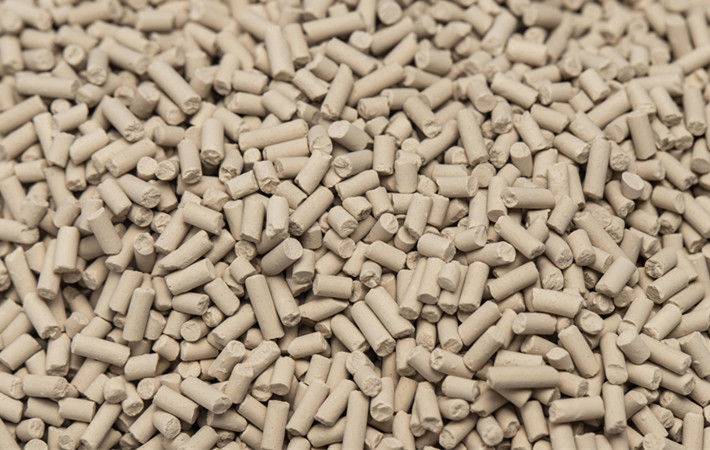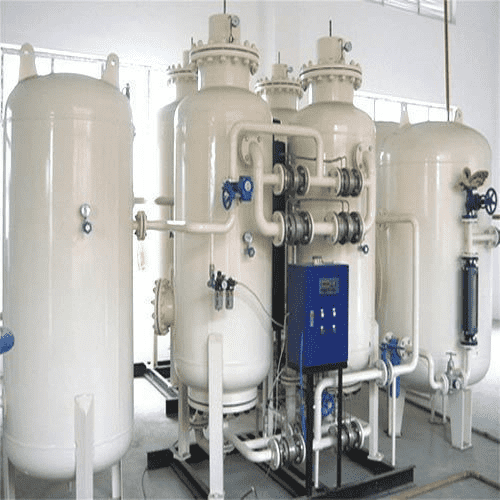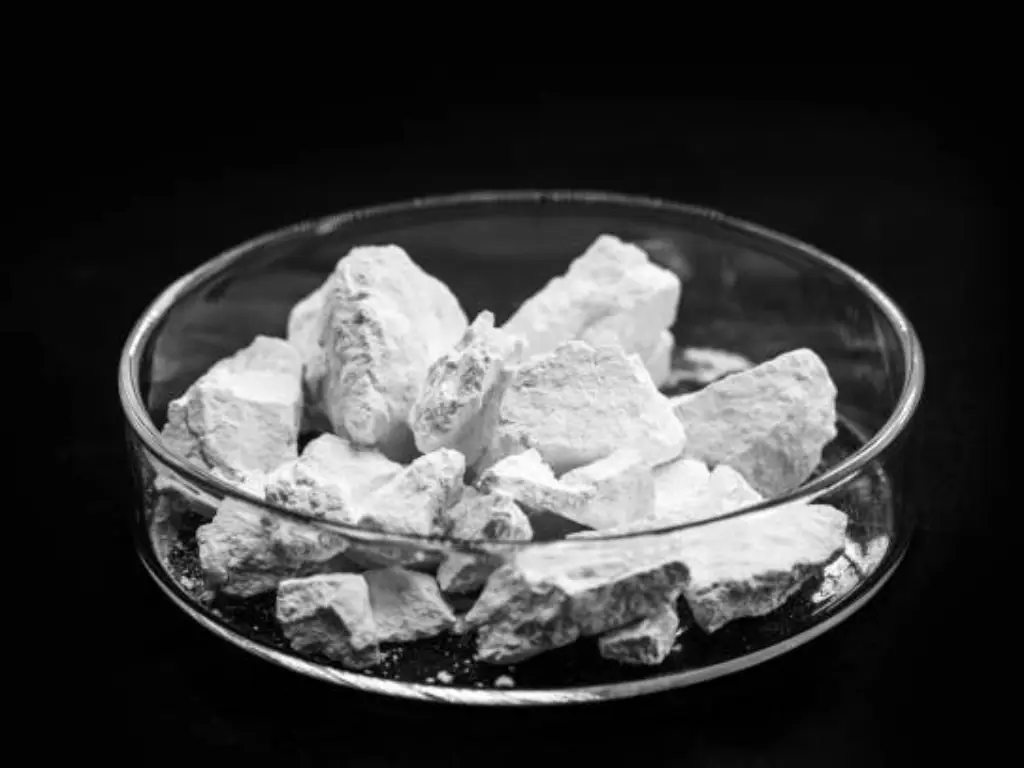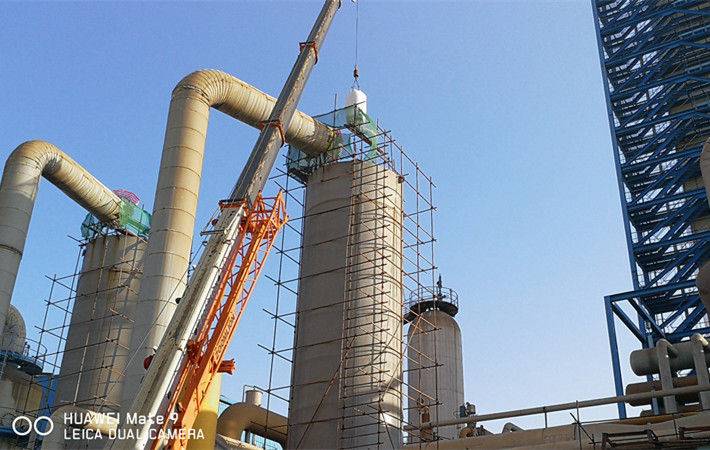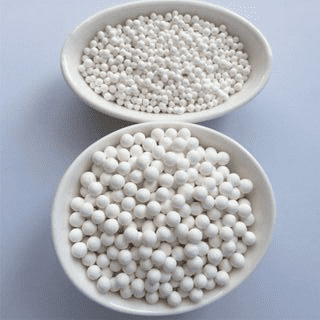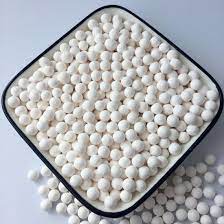Source: https://www.pinterest.com/
As much as air naturally occurs around us in the atmosphere, the process of separating the individual gases that are present is not that easy if you are talking about the normal air. At the same time, these individual gases are very important for a number of applications that affect our day-to-day lives. This is why cutting-edge technologies like VPSA and PSA were developed to help in extracting important gases like oxygen from compounds in their purest form.
We are going to look at what VPSA and PSA are, how each of them operates, the benefits and drawbacks of each, and the many applications they are used for in the modern world. If you have always been curious to know how these two operate, then you are in the right place.
VPSA
Source: https://www.pinterest.com/
VPSA is an acronym for Vacuum Pressure Swing Adsorption, and it is a technology that is used in oxygen production generators on the industrial level. VPSA technology makes use of a lithium-based molecular sieve and a number of special desiccants to absorb impurities like carbon dioxide, nitrogen, and water that are present in any air mixture in order for oxygen to accumulate in what’s left behind. It is a very efficient method of getting pure oxygen, with purity levels hitting as high as 95%. This is the level that is required for medical oxygen and other important applications.
Principle of Operation
Source: https://www.pinterest.com/
The basic setup of VPSA oxygen production is not that complicated. It is made up of several structures and equipment that work alongside each other to ensure that the oxygen that’s produced at the end is of the highest quality. These different structures involved in this process include the following.
Air Blower
There’s an air blower that is connected to a vacuum pump which provides the setup with raw air, feeding it through the entire system. The pressure that supplies the air into the system must be calibrated to meet the requirements of the whole setup for this to be successful. The main function of the vacuum pump is to make sure that the entire system is analyzed, and at the same time, it keeps the whole set up in an idle vacuum state, which creates the right conditions for VPSA machines to absorb other gases while producing pure oxygen.
A Cooler
There are high temperatures and pressures that are involved in VPSA processes. This can impact the quality of the final product, and there has to be a mechanism through which the temperature and pressures are regulated. This comes in the form of a cooler. It is water-based, and the air that is received from the blower is passed through the cooler, where the temperature and pressure are significantly reduced to enhance the adsorption of the unwanted gases and other compounds.
Adsorption System
This is the main part of the entire system. It is usually made up of two towers and a pipeline full of valves that are sufficiently armed with zeolite molecular sieves and activated alumina that act as the main adsorbents. Here, things are kicked off with the arrival of compressed air that has low temperatures and high pressure that come into the first tower. This air flows over the adsorbent materials in the pipeline where water vapor, nitrogen, carbon dioxide, and any other material are adsorbed.
What is left behind is mainly oxygen, and this is collected through an adsorption bed that is located at the top of the adsorption tower and given out as a gas output. At the same time, while all this is taking place in the first tower, there’s the second tower where regeneration of the molecular sieves takes place. Every time the sieves are about to reach their adsorption saturation and limit, a stream of low temperature and high-pressure air is injected into the second tower for more adsorption to take place and oxygen to be produced.
This is how these two towers are able to produce pure oxygen; they combine with each other seamlessly by getting rid of unwanted gases from one tower and collect pure and clean oxygen in the next.
Oxygen Buffer Tank
This is the tank that acts as the storage for the final oxygen that has been harvested through the entire process. It has to be well secured to stop any mixing with ordinary air, which may introduce nitrogen and carbon dioxide back into it. The size of the tank varies depending on the scale of the operation. They are much bigger if the entire CPSA setup is much bigger and vice versa.
Control System
This is a control center that runs a program that is created specifically to control every aspect of this entire setup. This is usually a pre-written valve control program that is installed into the PLC controller, and it mainly adjusts the closing and opening of every single pneumatic valve in the entire pipeline. This is necessary for the adsorption as well as the regeneration of the sieves to take place efficiently without any interruptions. This wouldn’t be possible if the system was manual as that increases chances of human errors, and that could impact the production times and increase chances of contamination happening.
Benefits of VPSA
Source: https://www.pinterest.com/
There are many benefits that are associated with the use of VPSA over any other process or technology. These benefits are part of the reasons why VPSA is highly preferred by many manufacturers who deal with air purification. The most notable advantages of using this system include the following.
- It makes use of a blower that’s oil-free, and this reduces the chances of an oil carry-over, which is a very common and annoying defect that affects oil-lubricated blowers, which end up contaminating the oxygen being processed.
- It makes use of lower pressures, and this significantly minimizes the potential for water retention and condensation. This ensures that there’s very little moisture in the product being purified.
- There’s less use of valves and manifolds, and this makes the transfer of gases and liquids from one tank to the other much faster, saving both time and energy, something that most of the other options cannot offer.
- The system is not as vulnerable to humidity compared to other systems. This makes it an ideal option to go with if you are looking to process the highest purity of any gas or liquid that you may be dealing with.
- It produces one of the purest forms of oxygen without wasting much of it. The activated molecular sieves used in the VPSA systems are highly efficient, and the fact that the system also caters for their regeneration once they hit their saturation limits ensures that the cleaning of the air continues without any interruptions.
- Low operating pressure also helps minimize sieve dusting. This is a situation where the sieve gets rid of nitrogen from the air. This low pressure brings down the cost of operation in a very huge way, and this is something that anyone dealing with huge scale operations will benefit from greatly.
- VPSA systems last much longer due to low energy costs and a combination of a number of parts that work efficiently with each other. This reduces the strain on each component, allowing the entire system the room to run with flexibility, increasing their lifespan a little more compared to other available systems.
- Fast start-up times require only 5 minutes for the manufacturer to get the desired quality of oxygen purity. They can be switched on and off depending on the oxygen demands at any particular time.
Applications of VPSA Systems
Source: https://www.pinterest.com/
Being this reliable at producing high-quality oxygen and other components, VPSA systems have been adopted by a number of major industries and are used in various applications that include the following.
- In chemical industries, for oxidation reactions and the running of incinerators that usually function better when they are fed with pure oxygen, which burns hotter than anything else.
- In the metallurgical industries that depend on high temperatures to run furnaces that are hot enough to melt down metals that have very high melting points.
- For delignification and oxy bleaching of paper in pulp and paper mills that are involved in the manufacture of all paper products that are used to make books, among other products.
- In water and waste management processes require the removal of toxic gases like hydrogen sulfide, which can be poisonous to the environment if left to accumulate in huge amounts in open spaces.
- For powering oxygen fuel burners and the generation of ozone gasses that are used in various manufacturing sectors around the globe.
- In the mining industry for processes like the purification of gold or the recovery of uranium for enrichment and other uses.
- In glass and steel mills where the use of heat is very necessary when it comes to turning the raw materials into malleable forms that are easy to work with in other stages of manufacturing.
PSA
Source: https://www.pinterest.com/
PSA is an acronym for Pressure Swing Absorption and it is a new gas generation technology that was created to offer an alternative to the popular VPSA. It also makes use of adsorbent materials that act as the sieve to filter out gas molecules based on their sizes.
The process makes use of natural air as the raw material and relies on high efficiency and selectivity to adsorb the needed gases to separate them from oxygen. The zeolite molecular sieves that are used in this process are not that different from those in VPSA. However, in this situation, the molecular sieves adsorb the gas molecules according to the size of the pores present.
Basically, all the molecules that are small enough to fit through the pores are adorned while the largest ones are repelled. This means that separating gases is very efficient through this process, and it is one of the ways you can get energy-rich oxygen at the end.
Just like in VPSA, the adsorption capacity of the seeds does hit its limit, and regeneration is triggered to keep the process going until the right amount of pure oxygen is harvested. This is done by reducing the pressures that in turn increase the rate of nitrogen adsorption, leaving behind pure oxygen for easy collection.
Principle of Operation
Source: https://www.pinterest.com/
There are a number of parts and components that are used in the PSA system that combine with each other to ensure that the generation of oxygen is done without any mishap or contamination happening at the end. The following are the main parts that make up the PSA system.
An Air Compressor
This is what provides the entire system with raw air, and the output is controlled by the needed amount of oxygen to be processed. You have to select an air compressor that has the capacity to handle the entire system. A bigger setup requires a bigger air compressor and vice versa. There has to be a balance.
Cold Dryer
Once the compressor has pressurized the air, it pushes all of that into the cold dryer, where the high temperatures and pressures are regulated down to manageable levels. In this chamber, the air is cooled, dried, and all the impurities that may be presently removed entirely. All this combines to lower the temperature significantly while increasing the pressure to make things ready for the next stage.
Degreasing Device
This is a device that gets rid of oil and grease that accumulates over time around the components and the pipeline. This oil mist usually accumulates when the temperatures dip to a certain level, and it can be a source of contamination if nothing is done in time. The oil mist also has a negative effect on the zeolite molecular sieves as it affects their lifespan, making them hit their saturation limits much faster than normal.
Adsorption System
This also comes with two towers and a pipeline with a network of valves that are stuck up with zeolite sieves adsorbents. When the compressed air is injected into the first tower, it is passed over a layer of adsorbents where nitrogen, water, and carbon dioxide are absorbed, leaving oxygen behind.
In the second tower, the zeolite molecular sieves undergo constant regeneration every time they hit their limit, and this is what keeps the process continuing non-stop until the desired amount of oxygen is harvested. The two combine seamlessly, just like a VPSA system, to ensure that the level of oxygen purity is as high as possible.
A Buffer Tank
This is a specialized tank that is used to collect the oxygen that’s generated from the entire system. It is also used to stabilize things as the generation and separation of the gases continue in the background until everything is done.
A Control System
This is a system that makes use of pre-programmed instructions that control the natural operation of the Pressure Swing Absorption system from one point. The only thing that the engineer is required to do is to add the program and integrate everything with the entire system, and the rest takes care of itself. It is a very handy way of ensuring efficiency is adhered to in order to get the poorest form of oxygen that is devoid of any contamination.
Benefits of PSA
Source: https://www.pinterest.com/
There are a number of advantages that come with using PSA technology for generating and separating gases. Being an alternative to VPSA has seen a good number of manufacturers and companies adopting the system over the other ones, and the following are some of the benefits that this brings to the table.
- There’s the use of automation, and this makes the process much safer and more efficient. This wouldn’t be the space if there was direct manual labor involved. When you consider the high temperatures and pressures and the fact that pure oxygen is very flammable, having human operators filling up the floor area is not a good idea.
- It is a very reliable process that comes with enhanced failure safety. This means that the likelihood of thighs going wrong is very minimal, and in the event that they happen to occur, then dealing with the fallout is much easier.
- It is easy to start and stop. This offers great control and accuracy, allowing the right amounts of oxygen to be produced when needed. This saves on cost and reduces the chances of wasting raw materials like molecular sieves.
- It is a system that can be used for a very long time, thanks to an extended operational life. This makes it a very cost-effective method to adopt if you are looking to set up a large-scale gas separation and generation operation.
- PSA systems have low operational costs. This is due to the fact that every part is optimized for its functions. This reduces lags, time-wasting, and the wastage of resources. All these three combine to bring down the overall cost of the operation.
- There are no special workshop requirements needed, and setting up the system is quite easy. There’s always room for expansion later on if you ever think of scaling up your operations.
Applications of PSA Systems
Source: https://www.pinterest.com/
There are a number of applications that PSA systems are used for in the manufacturing and commercial industries. You have probably used certain products that have been made using PSA processes. The following are some of the most notable applications right now.
- Metal and Gas Welding: Pure oxygen is highly flammable and it burns at very high temperatures. This is the kind of heat that is ideal for gas and metal welding. Most of the oxygen that is harvested through the PSA process is used to make precise welding works in most heavy industrial sectors like the automotive industry, among many others.
- Metallurgy: This is the process of creating structures using metals of all kinds and shapes. For metal to be molded, it has to be subjected to the intense heat that brings it to a melting point. This can be done using electricity, but that ends up using a lot of power, and that’s an added cost. To skirt around this, many manufactures who deal with metals use pure oxygen to burn up metals to high temperatures that make it easy.
- Petrochemical Industries: Most chemical and petrochemicals depend on pure forms of oxygen for their oxidation processes when it comes to things like recovering nitric acid, propylene oxide, ethylene oxide, vinyl chloride, drying of ethanol, and a host of other chemical compounds that are widely used around the world.
- Fish Farming: This comes as a surprise, but oxygen generated from PSA systems is also used in fish farming in a number of ingenious ways. One popular one is the use of oxygen to reduce the incubation periods of the fish eggs by supplying the water with rich oxygen that accelerates the growth process of both the eggs and the adult fishes. Thus increasing production.
- Glass Industry: Glassmaking is another process that requires a lot of heat to change the raw materials from sand to lass. Using electricity ends up increasing the power bills, but using furnace oxygen makes the melting process faster, is less costly, and there’s more control.
- Purification of Biogas: One of the biggest drawbacks to adopting biogas energy is the fact that alongside the much-needed methane gas, there’s a very high production of hydrogen sulfide. This is not only toxic to people but can cause serious damage if exposed to flames. PSA systems are used to get rid of hydrogen sulfide and other toxic gases that are not required in biogas setups.
Final Verdict
Source: https://www.pinterest.com/
So how do these two systems compare to each other? How do you make a choice between the two? The short answer to the second question is that it all comes down to personal preferences. Both the PSA and VPSA are capable of handling the same tasks with very little difference. You simply have to go with what suits your needs better.
The following is a quick comparison table that shows how the two processes square against each other. The information may help you make a better decision when it comes to choosing either PSA or VPSA.
| PROCESS | PSA | VPSA |
| Power Plant | Air Compressor | Blower & Vacuum Pump |
| Air Purification | Air Dryer & Filters | No Need |
| Adsorption Materials | Molecular Sieve & Alumina | Molecular Sieve & Alumina |
| Towers and Buffer Tank | Pressure Vessel | Normal Pressure |
| Water Use | Not Required | Required |
| Electricity Use | More | Less |
| Instrument | Self-Contained Plant | Needed |
| Land Occupation | Small | Bigger |
| Investment Cost | Less | More |
| Operation | Fully Automated | Fully Automated |
| Oxygen Pressure | 0.2 – 0.4 | 0.02 – 0.03 |
As you can see from the chart above, the differences are not centered around functionality but more on the cost and the scale of the operation. Keep all these factors in mind when it comes to making the right decision.
Conclusion
VPSA and PSA are both highly efficient and reliable processes that can work in any setting, it all comes down to the kind of setup you would want to use and the industries you intend to serve. To learn more about gas separation and generation, the machines needed, and how to set everything up from scratch, then check out our website and have all the questions you may have answered by a team of experts.


